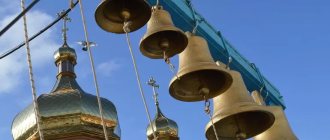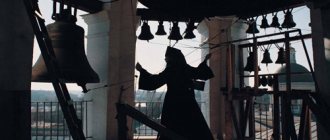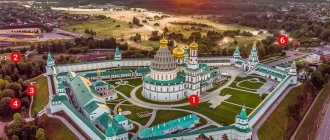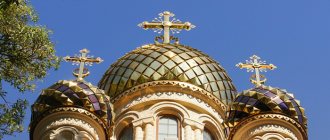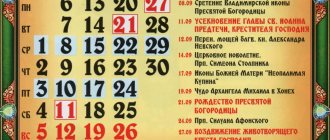Revival of a forgotten art
Bell ringing is an ancient Christian tradition. Since the 4th century, bells have been used to gather believers for the beginning of the service, inform about its important moments, and add solemnity to festive services. In pre-revolutionary Russia, bell casting was a separate art form, with its own great masters.
During the Soviet years, the tradition was interrupted. And it began to revive at the end of the 20th century.
Photo: kampan.ru
At the end of the 20th century, with the beginning of the restoration of church life in Russia, the first bell foundry after the revolution was built in Voronezh. Moreover, it was not by chance that this thing happened there: back in the 19th century, Voronezh bells were known throughout Russia. Two factories of the Samofalov brothers supplied their products to the most remote corners of our country. However, due to the First World War and subsequent events, the factories were closed and the bells fell silent for several decades.
Local entrepreneur Valery Nikolaevich Anisimov took on the complex task of reviving bell art. Since 1989, he has come a long way - from a foundry in an abandoned sand quarry to an enterprise that has received recognition in Russia and abroad.
Today it is one of three large bell foundries in our country. The Anisimov plant accepts orders not only from all over Russia, but also from different countries around the world.
Basic information
A bell is a metal percussion musical instrument (usually cast from so-called bell bronze), a sound source that has a dome-shaped shape and, usually, a tongue striking the walls from the inside. There are also known bells without a tongue, which are struck with a hammer or a log from the outside.
Bells are used for religious purposes (calling believers to prayer, expressing solemn moments of worship) and in music. It is known that bells are used for socio-political purposes (as an alarm to call citizens to a meeting (veche)).
Tradition and modernity
Valery Nikolaevich started his path practically from scratch: he had neither experience nor knowledge in the field of bell-casting art. The entrepreneur began to learn the secrets of making bells from a book from 1912, found in the city library. Gradually, it was possible not only to restore the lost secrets of bell making, but also to create our own. Today, Anisimov’s production combines both the traditions of ancient masters and modern computer technologies.
The bell model is calculated on a computer, and its sound is verified in a digital acoustic laboratory. At the same time, the plant tries to preserve pre-revolutionary casting traditions and treats the canons with care.
Content
- 1 Etymology
- 2 Use of bells
- 3 History
- 4 Bells in the Russian Orthodox Church 4.1 Blagovestniks
- 4.2 Bells
- 4.3 Ringing bells
- 4.4 Placement of bells
- 6.1 Bells in Russian music
- 9.1 Pre-Imperial bells
What interesting projects was the plant involved in?
Restoration of the New Jerusalem temple complex on the Istra River
The peculiarity of the work on the temple complex “New Jerusalem” was that each bell carried a very deep meaning, and together they told the story of the New Jerusalem. The difficulty of working on the bells for the New Jerusalem was that only one bell from the 17th century has survived to this day. However, it did not at all correspond to the canons and proportions accepted in bell foundry. The craftsmen of the Anisimov Bell Foundry had to try hard to comply with all the rules and at the same time reproduce the original look of the bells.
The “Resurrection” bell weighing 8500 kg, cast for the Holy Resurrection New Jerusalem Monastery. The work was completed in 2013.
Another challenge was the very detailed bas-reliefs. For example, one of the bells, weighing four and a half tons, was decorated with images of 400 saints who are revered by the church in a particular month. One person could not cope with such a volume of work, so the Anisimov plant was looking for craftsmen with a similar style.
According to the plan of Patriarch Nikon, New Jerusalem was to become a kind of spatial icon of the Holy Land. Although there are many examples of the reproduction of Palestinian shrines in the world, only in New Jerusalem the image of the Holy Land was recreated in full iconographic detail, displaying all the places of Christ’s earthly life.
Bells for the Valaam Monastery
In 2005, a large bell of good news was cast at the Anisimov plant for the Valaam Monastery; its weight was 14 tons. A year later, the bell “St. Nicholas” was delivered to Valaam, which completed the ensemble of bells of the Transfiguration Cathedral. Its weight is almost 6 tons, its height is 2 meters 10 centimeters.
Bell "St. Nicholas" on Valaam:
Bells for St. Isaac's Cathedral in St. Petersburg
In 2012, fifteen bells were cast at the Anisimov plant for St. Isaac's Cathedral in St. Petersburg. Their total weight was twenty-two tons, six hundred and fifty kilograms.
Photo: kampan.ru
Work on the bells was carried out in accordance with ancient traditions and canons. The Annunciation Bell, weighing 10 tons, is decorated with the faces of Moscow saints and metropolitans. In 2015, the main bell of the ensemble, “Resurrection,” weighing 17 tons, was cast at the Anisimov plant for the northwestern bell tower of St. Isaac’s Cathedral.
Anisimov Valery Nikolaevich, General Director of LLC
A bell weighing 17 tons was cast for St. Isaac's Cathedral. The work was completed in 2015.
Fragment of the bell decoration. The work was completed in 2015.
Bells for the Sredneuralsky convent in honor of the icon of the Mother of God “Control of the Loaves”
One of the significant works for steel is the bell cast for the Sredneuralsky convent in honor of the icon of the Mother of God “Control of the Loaves”. In 2013, the plant created an ensemble of 17 bells, the total weight of which was 65 tons. The main selection bell weighs 40 tons.
A 40-ton bell cast for the Sredneuralsky convent in honor of the icon of the Mother of God “Control of the Loaves.” The work was completed in 2013.
Wax model of a 40-ton bell cast for the Sredneuralsky convent in honor of the icon of the Mother of God “Control of the Loaves.” The work was completed in 2013.
Dispatch of a 40-ton bell cast for the Sredneuralsky convent in honor of the Icon of the Mother of God “Control of the Loaves.” The work was completed in 2013.
Bells for the Kronstadt Naval Cathedral in the name of St. Nicholas the Wonderworker
The Kronstadt Naval Cathedral in the name of St. Nicholas the Wonderworker, or, as it is also called, St. Nicholas Cathedral, was conceived as a monument to all sailors and is rightfully considered the spiritual center of the entire Russian fleet and the main dominant feature of Kronstadt. In 2011, a unique selection of bells from St. Nicholas Cathedral was cast at the Anisimov plant. This ensemble was created in the likeness of the one that decorated the bell tower of the Kronstadt Naval Cathedral before its closure during the years of persecution.
The selection of bells of the St. Nicholas Cathedral in Kronstadt was one of the largest bell selections created in the Russian Empire at the beginning of the 20th century. The ensemble was led by a large gospel bell weighing more than 1000 pounds.
prepared a selection of 14 bells for the Kronstadt Naval Cathedral with a gospel bell weighing 16 tons. The sound of the new ensemble fully corresponds to the sound of the second bell, the only one preserved from pre-revolutionary times - weighing 295 poods (4,840 kg) and a tongue weighing 228 kg. All selection bells were cast by craftsmen at the Anisimov plant based on preserved archival data about their historical predecessors. Each bell is decorated with the faces of saints and ornaments.
A bell weighing 16 tons for the Kronstadt Naval Cathedral in the name of St. Nicholas the Wonderworker. 2011.
A fragment of a bell decoration weighing 16 tons for the Kronstadt Naval Cathedral in the name of St. Nicholas the Wonderworker. 2011.
Sending a selection of 14 bells with a gospel bell weighing 16 tons, cast for the Kronstadt Naval Cathedral in the name of St. Nicholas the Wonderworker. 2011.
However, the geography of the bell foundry's activities is not limited to our country.
Bells for Harvard
Vera company that was chosen to produce exact copies of the bells of the St. Daniel Monastery, which returned to their homeland from Harvard in 2008.
The 17 bells of the St. Danilov Monastery are one of the few that have survived from pre-revolutionary times. The ensemble was purchased by American industrialist Charles Richard Crane and donated to Harvard University in the 1930s. For 70 years, the bells hung in the Lowell House tower and rang every Sunday, becoming an integral part of the life of the American university. Negotiations about the return of the bells have been ongoing since 2003. It was decided that the bells would be exchanged for their exact copies. In 2006, an American delegation visited Russia to select a plant that would produce bells. The guests saw the Vera enterprise last, but it was the one they chose. On July 8, 2008, a solemn ceremony was held to exchange the historical Danilov bells for their skillful copies.
Photo of a 14,000 kg bell cast for Harvard University.
Presentation of the Order of Andrei Rublev by Patriarch of Moscow and All Rus' Alexy II to the General Director of Vera LLC, Anisimov Valery Nikolaevich.
Etymology[ | ]
The word is onomatopoeic, with a doubling of the root ( *kol-kol-
), has been known in Old Russian since the 11th century.
Presumably goes back to the same basis as the ancient Indian *kalakalah
- “unclear dull sound”, “noise”, “cry” (for comparison in Hindi:
kolahal
- “noise”).[1].
The form “ bell
” was formed, probably, in consonance with the common Slavic
*kol
- “circle”, “arc”, “wheel” (for comparison - “wheel”, “about” (around), “wheel”, etc. d.) - according to the conformity of the form.
In other Indo-European languages there are words of related origin: Lat. calare - “to convene”, “to exclaim”; Old Greek κικλήσκω, ancient Greek. κάλεω - “to call”, “to convene”; German Glocke - “bell”, Lithuanian kankalas
(from
kalkalas
) - bell, etc.
In the Germanic branch of Indo-European languages, the word “bell” goes back to Proto-Indo-European *bhel-
- “to make a sound, noise, roar”: English.
bell, n.-v.-n. hallen
,
hel
, svn
hille
,
holl
, etc.
Another Slavic name: “Campan” comes from Lat. campana, italian campana. This name is in honor of the Italian province of Campania, which was one of the first in Europe to start producing bells. In the East, Campanians appeared in the 9th century, when the Venetian Doge Orso I presented 12 bells to Emperor Basil the Macedonian[2].
Notes[ | ]
- Etymological Dictionary of the Russian Language (undefined)
(inaccessible link). Date accessed: December 25, 2021. Archived December 25, 2021. - Complete Church Slavonic Dictionary Archpriest Grigory Dyachenko
- Valentsova M. M. About the magical functions of the bell in the folk culture of the Slavs // The sounding and silent world: Semiotics of sound and speech in the traditional culture of the Slavs. - M.: Indrik, 1999.
- Fraser J. J.
Chapter V. Golden bells // Folk-Lore in the Old Test Testament. — 2nd ed. - M.: Politizdat, 1990. - P. 486-509. — 542 p. - Oparin A. A. “And the stones will cry out...”: Monograph. — Kharkov: Fact, 2000. ISBN 966-7099-99-7
- N.I. Olovyanishnikov, 1912. “History of bells and bell foundry art,” pp. 27-30
- ↑ 12
A.F. Bondarenko, 2007. “History of the spread of bells and bell making in medieval Rus' in the 11th-17th centuries” - A. Chokhov
- N.I. Olovyanishnikov, 1912. “History of bells and bell foundry art,” p. 409
- N.N. Rubtsov, 1962. History of foundry production in the USSR. Ed. 2. Part 1. M., 1962.
- IN AND. Afanasyev, Foundry in Pskov in the 16th century. // Social and political history of the USSR. Sat. articles by graduate students and applicants. M.;L., 1974. P. 91112; It's him. Documentary materials of the 17th century. about foundry production in Russia in the “Main Collection of Letters” // Problems of source study of handwritten and early printed funds. L., 1979
- ↑ 1 2 3 4 5 6 7 Barkovskaya Svetlana Petrovna.
Russian spiritual culture: A textbook for students of secondary vocational education in musical and pedagogical areas of training. — Scientific magazine “Kontsep”, 2013-03-11. — 297 p. - Anatoly Stepanovich Kargin, Anna Vladimirovna Kostina, State Republican Center of Russian Folklore (Russia).
Folklore of small social groups: traditions and modernity: collection of scientific articles. - Mr. Republican Center of Russian Folklore, 2008. - 308 p. - Blagovestnik, bell // Encyclopedic Dictionary of Brockhaus and Efron: in 86 volumes (82 volumes and 4 additional). - St. Petersburg, 1890-1907.
- Rogal-Levitsky D. R.
Ch. 4. Percussion instruments, “Bells” // Modern orchestra. - M.: State Musical Publishing House, 1953. - T. 2. - P. 357. - 448 p. - Yareshko A. S.
Bell ringing in the works of Russian composers (to the problem of folklore and composer) // All-Russian scientific-practical. conference “Folklore of the Peoples of Russia”: Proceedings of the conference - Astrakhan: Science, 2003. (inaccessible link) - Welch, Patricia Bjaaland. (Welch, Patricia Bjaaland) . Chinese Art
(Chinese art). Tuttle, 2008. ISBN 080483864X. Partial text on Google Books.
Bells of China[ | ]
A bell in the Wuhan Taoist Temple of Chang Chun, suspended from a pulao dragon.
In China, there is a centuries-old tradition of bell casting, which has spread to neighboring countries that have been influenced by Chinese culture (Korea, Japan). In late imperial and modern China, bells are a typical feature of Taoist and Buddhist temples. In addition, in the center of old Chinese cities, special “bell tower” and “drum tower” were often built (such as the Bell Tower in Xi’an and the Gulou and Zhoglou towers in Beijing), located on which the bells and drums gave a signal at dawn and at sunset, as well as in case of emergency events.
The bracket by which a Chinese bell is suspended is often cast in the shape of a pulao (Chinese: 蒲牢) animal. According to legend, Pulao is one of the nine sons of the Chinese dragon who loves to scream loudly. That’s why he got a place on the bell[17].
Bells of the pre-imperial era[ | ]
Main article: Bianzhong
The Chinese bell culture, which has survived to our time, appears in a new perspective in the light of archaeological discoveries of the 20th century. It was discovered that, unlike modern round bells of Indian origin, the ancient original Chinese type usually had an almond-shaped cross-section. Bells of this type were distinguished by a shorter duration of sound, but could produce two distinct tones and, in their most developed form, were made up of sets covering up to 5 octaves and adjusted to the chromatic scale (see Tomb of the Marquis I). The production of almond-shaped bells flourished during the Zhou Dynasty. The discovery of the largest bell of this type (more than 1 m in height) was announced in 1986.
The characteristic shape of some bells is noteworthy: nao
was installed, like goblets, with the sounding part upward (this is evidenced by a long, even “leg”, not suitable for hanging an instrument), and the
yongzhong
retained the “leg” for installation, but was suspended by attaching a rope along the transverse ring on it, or behind special loop. The “leg” of the bell, which was hollow from the inside, was retained, presumably for acoustic reasons.
It is curious that after the Warring States period, along with the decline of the Zhou ritual, the golden age of Chinese bell making also ended. The last echo of the old tradition, lost by the Han Dynasty, was the production of giant ritual bells by Qin Shihuang. By his order, they were made from weapon bronze from the conquered kingdoms.
See also[ | ]
|
|
|
Historical information
Small Chinese instruments are considered the prototype of modern bells. They were made in the 23rd–17th centuries BC. e. The masters of the Celestial State used them for music. Such devices became the prototype for the carillon, known in Europe.
The Old World for a long time prohibited the use of these instruments, as it associated them with paganism. Although in the Middle Ages, bells began to symbolize religion and churches. Their surface was covered with engravings with short parables from the gospel. And some details bore the names of parts of the human body: tongue, lip, ears, body. In Byzantium, a tradition arose to consecrate a bell. Kievan Rus also borrowed it.
All devices have a similar structure, the main details:
- clamp - the base on which the bell rests;
- crown - a kind of handle by which it is suspended;
- head - upper part;
- waist - middle of the device;
- lip - the widest part;
- language.
People believed that the chime could drive away evil spirits and even heal. Bells are found in almost all religions today. And shamans still use them to drive out evil spirits.
